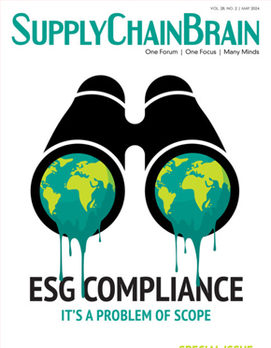
Retailers have always had to deal with returns. But with the steady rise of online sales, the amount of returned product is growing larger with each passing year.
Costly and labor-intensive, growing returns have led to an unanticipated “supply chain stock factor,” as businesses attempt to accept returned inventory. As a result, retailers have developed new ways to deal with reverse logistics.
In 2021, $761 billion in merchandise was returned to retailers, according to the National Retail Federation (NRF) and Appriss Retail. This massive number accounted for an average of 16.6% of total U.S. retail sales, which climbed to $4.583 trillion during the year. In addition, the average return rate was up significantly from a year earlier, when the total rate of return clocked in at 10.6%. In 2021, 20.8% of online sales purchases were returned, similar to 2020 numbers.
The same NRF survey found that for every $1 billion in sales, the average retailer incurs $166 million in returned merchandise. And for every $100 in merchandise businesses receive back, $10.30 is calculated as return fraud.
With these figures steadily rising, some believe more must be done to deal with returns.
As Steve Prebble, chief executive officer of Appriss Retail, explains, “Retailers must rethink returns as a key part of their business strategy. Retail is dealing with an influx of returned items. Now is the time to stop thinking of returns as a cost of doing business and begin to view them as a time to truly engage with your consumers.”
A higher rate of return has an obvious negative effect on a retailer’s bottom line. And yet there’s more to the story. The Guardian notes that product returns contribute to greenhouse-gas emissions, because much of what’s sent back ends up in landfills and not back on the shelves. One company that helps retailers process returns, Optoro, estimates that Americans put 5 billion pounds of returned goods into the ground each year.
For those returns that do make it back in front of customers in brick-and-mortar stores, there’s another problem. Ultimately, those items go back into the system, causing a surplus of in-store inventory, according to NCR Payment Solutions.
The pandemic has added another cost to the return process for retailers in the form of new safety protocols. Though COVID-19 is slowly coming under control, those protocols, which have included quarantining and disinfecting returned merchandise, might never go away.
There’s no magic bullet when it comes to conquering reverse logistics. The quickest remedy, shortening return times for customers (or not allowing them at all on certain products), isn’t feasible in today’s climate. Following are some examples of new ways to deal with the problem.
Third-party partners. Many retailers have turned to third-party logistics providers. These organizations address transportation and storage issues by taking the items directly back to a warehouse or restocking sites, or even to locations for responsible recycling. 3PLs may also handle customer refunds and supply chain and inventory management, depending on their expertise.
Frictionless returns. Retailers have also embraced frictionless return solutions, whereby customers are presented with several return options to make the process smoother. In addition, the solution is controlled heavily by software, which fully automates the process.
One of the biggest leaders of frictionless returns, PayPal’s Happy Returns, currently offers over 3,800 locations for returns in 288 metro areas in the U.S. The returns are accepted without packaging and labels, with the average visit taking less than 60 seconds. During that time, exchanges, refunds, and store credit are issued immediately.
White-glove returns service. A premium service that’s also convenient, this works just like traditional white glove delivery, but in reverse. In this case, the service provider comes into a home and inspects, disassembles and packages whatever item needs returning. Many traditional carriers won’t offer a service like this, but there are delivery and reverse logistics partners that include re-packing and re-palletizing as part of the returns process. This can be a key component of a truly exceptional retail customer experience, and can drive repeat business when the customer is ready to purchase again.
A more efficient return process is good for the retailers and customers. More streamlined operations can lead to quicker turnaround and possibly lower costs for the former. For the latter, a smooth return process can build customer trust and loyalty and hopefully lead to more sales.
As Jonathan Poma, CEO of Loop Returns told Retail TouchPoints, “A return is a second chance to help a customer find a product that they love, so don’t limit their choices to only buying the same product in a different size. Let them find the right size and then keep shopping for more products, all in the same transaction.”
Jay Sackos is vice president at Dolly.







